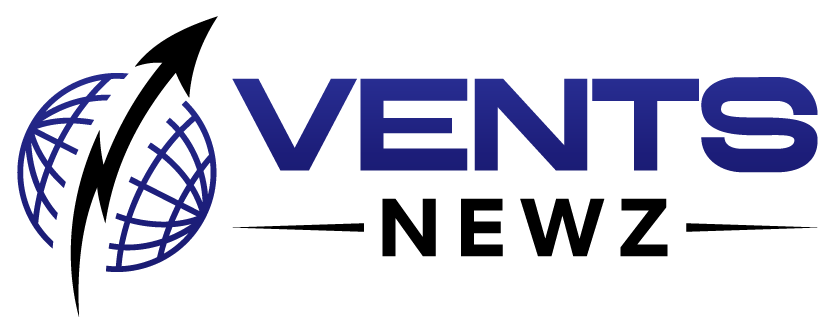The Rear Delt posterior deltoid muscle, commonly known as the posterior deltoid, is one of the 3 muscle tissues that make up the shoulder deltoid institution. It originates from the spine of the scapula shoulder blade and inserts into the deltoid tuberosity of the humerus Rear Delt. This muscle is generally responsible for shoulder extension, horizontal abduction, and external rotation of the shoulder joint. Anatomically, it works in synergy with other muscle groups including the latissimus dorsi and infraspinatus to perform complex upper-body movements. Understanding its anatomy is essential to effectively focus on it during exercise.
The importance of rear delt strength
Strengthening the rear delts is essential to overall shoulder health and functionality. Weak can result in muscle imbalances that increase the risk of shoulder accidents and poor posture. Rear delt strength is essential for maintaining shoulder balance in all overhead actions and exercises along with bench presses and shoulder presses. In addition, it allows us to balance the strength developed in the front delts and pectoral muscle mass, thus ensuring a comprehensive improvement of the shoulder muscles. Incorporating rear delt sports activities into your repetitive activities can beautify every performance and appearance.
Common mistakes when training the rear delt
Many people make common mistakes when training their rear delts that can lead to ineffective exercises or even injuries. One common mistake is using too much weight, which often causes other muscle mass to compensate, reducing the activation of. Another mistake is not following proper form, along with not keeping the shoulders in the lower back and when exercising down, which could shift the focus away from. In addition, neglecting warm-up and moving physical games can increase the risk of injury. Understanding these mistakes can help optimize rear delt training and ensure safer and more powerful workouts.
Rear delt isolation exercise
Isolation sports activities focus mainly on the rear delts, ensuring maximum engagement and growth. One effective isolation exercise is the rear deltoid fly. This can be done with dumbbells, cables, or an inverted % deck gadget. During this exercise, it is important to focus on contracting while maintaining controlled and planned movements. Another fantastic isolation exercise is the facelift, which no longer only targets but also improves shoulder stability and posture. Isolation physical games are essential for effective growth of and can be covered by giving up exercises due to concentrated muscle fatigue.
Compound movements for rear delts
Compound movements that interact with more than one muscle group are also useful for improving the rear delt. Exercises like bent-over rows and T-bar rows target on the side of various higher muscle tissues. These physical activities help in building normal body electricity and muscle mass. Performing compound actions allows the use of heavier weights, which sell more hypertrophy in. In addition, consisting of compound movements in your regular exercise ensures that are exercised along with other muscle groups, selling balanced muscle improvement and preventing imbalances.
The role of resistance bands in rear delt training
Resistance bands are flexible tools that can properly target the rear delts. They provide regular anxiety at a certain phase of the range of motion and improve muscle activation. Exercises involving resistance band stretches and face pulls are great for engaging. These sports can be performed anywhere, so they are suitable for home exercises or as part of a warm-up. Additionally, resistance bands allow for different levels of resistance, customization for unique energy levels, and progression. Incorporating resistance bands into your routine can add variety to your rear delt workout and help build muscle mass and endurance.
Frequency and Volume of Rear Delt Training
The frequency and extent of rear delt training are crucial elements for muscle growth and improvement. Training three times a week is usually encouraged, taking into account good recovery while ensuring constant stimulation. Each exercise must include three to four sports activities targeting the three units of 1010 to 5 repetitions. It’s important to vary sports and resistance levels to save platforms and keep progressing. Adequate rest between sets, generally 60-90 seconds, allows for adequate recovery and preparation for the next set. Monitoring and adjusting the frequency and extent of training based entirely on development and recovery can optimize rear deltoid development.
Incorporating rear delt exercises into a full workout routine
Integrating rear delt sports directly into a full workout routine ensures balanced shoulder development and average upper frame energy. Rear delt movement activities can be included in both push and pull training days. For example, including facelifts or reverse pull-ups on push-up days can complement chest and shoulder sports, while incorporating bent-over or T-bar rows on pull-up days targets the rear delts along the back musculature. This method ensures that are constantly engaged and developed on the side of other muscle organizations. Adapting a regular workout to include unique rear delt exercises can embellish shoulder balance, posture, and aesthetic appeal.
Importance of warm-up and mobility
Warm-up and mobility exercises are essential for preparing the rear delts for extreme workouts and stopping injuries. Dynamic stretches and mobility exercises that focus on shoulder and upper back growth, blood flow, and versatility, reducing the risk of foot injuries. Exercises involving arm circles, band stretches, and resistance band shrugs are effective warm-up routines. In addition, incorporating foam rolling and stretching flexibility exercises can be a source of recovery and maintenance of shoulder mobility. A thorough warm-up and regular mobility will ensure that the rear delts are ready for training, increasing overall performance and reducing the risk of injury.
Track progress and adjust workouts
Monitoring progress and modifying exercises is important for continuous rear delt improvement. Tracking variables including weight used, variety of repetitions, and exercise variations can help examine development. Regularly switching sports activities, resistance levels, and rep levels can save you plateaus and stimulate similar growth. Incorporating comments from exercise routines that consist of degrees of pain and fatigue can also lead to modifications. Utilizing devices such as exercise logs or apps can be a useful resource for tracking and planning. Regular comparison and adjustment of the training approach ensure that are constantly increasing and undoubtedly responding to the training stimulus.
Advanced rear delt exercises
Once you’ve mastered the basics, you can go extra bold and develop your by incorporating high-end sports. One such exercise is the oblique rear delt fly, performed on an incline bench to increase the range of motion and isolation. Another advanced pass is the bent one-arm series, which allows for greater awareness and control in every aspect and corrects imbalances. Physical games with a cable system, consisting of rear delt cable crossings, offer regular anxiety and allow for greater different angles of resistance. These cutting-edge exercises add range and depth to your reps, promoting sustained gains in muscle mass and strength.
The importance of proper form and technique
Maintaining proper form and method at some point in the physical games of the rear delt is essential to prevent injury and maximize effectiveness. Proper form means keeping your shoulders back and down, engaging your center, and rebounding momentum-based actions. For example, during rear delt flyes, the movement should be controlled and deliberate, with a focus on pressing at the top of the movement. Improper shape can result in shoulder impact or various accidents. Practicing sports with lighter weights initially to grasp the approach before moving on to heavier weights ensures safe and effective training.
The role of nutrition in muscle development
Nutrition plays a key role in muscle improvement, which includes the rear delts. Eating a balanced diet rich in protein helps muscle repair and growth. Protein sources consisting of lean meat, fish, dairy products, and plant products such as beans and tofu offer essential amino acids for muscle synthesis. Carbohydrates also provide energy for exercise, and healthy fats manage normal fitness. Staying hydrated and eating a balanced meal plan will ensure your body has the vital nutrients for successful recovery and muscle building. Nutritional support is key to optimizing the results of your training and achieving defined strong.
The benefits of supersets and drop sets
Supersets and drop units are excellent training strategies that can emphasize rear delt training and promote muscle hypertrophy. Supersets consist of performing two exercises reversed with minimal relaxation, focused on the same muscle institution. For example, combining rear delt flyes with facial pulls in a superset will maximize muscle engagement. Drop sets involve playing and exercising to failure, then lowering the load and persevering with the set to similarly exhaust the muscle. These techniques extend the time under tension and muscle fatigue, leading to extra muscle growth. Incorporating supersets and drop units can beautify the effectiveness of rear delt training.
Effect of rest and recovery
Rest and healing are vital additions to any powerful training routine. Adequate relaxation between training routines allows for repair and strengthening. Overtraining without adequate recovery can lead to muscle fatigue, reduced performance, and an increased risk of injury. Incorporating relaxation days and ensuring quality sleep are vital for muscle recovery. Additionally, techniques including foam rolling, stretching, and friction can aid in recovery by reducing muscle soreness and increasing flexibility. Balancing overtraining with proper recovery practices ensures sustainable development and the most selective development of the rear delt.
Variability and periodization of training
Training variability and periodization are critical to continuous development in rear delt improvement. Periodization involves different training stimuli over some time to save you from plateaus and sell muscle growth. This may consist of converting physical activities, repetition phases, units, and intensity levels. For example, incorporating a hypertrophic phase with higher reps and lighter weights, followed by a power segment with reduced reps and heavier weights, can moderate the rate of usual muscle improvement. The variability of the training keeps the exercises challenging and engaging, which ensures continuous operation and boom of the rear delts.
The psychological aspect of training
The psychological issue of training is regularly overlooked, but it plays a big role in achieving fitness goals. Staying motivated and maintaining an efficient mindset can beautify the consistency and intensity of exercise. Setting unique possible wishes to improve your rear delt and tracking progress can offer a sense of accomplishment and motivation. In addition, different exercise routines that keep them excited and seeking social support from exercise companions or health groups can beautify education. Mental toughness and an excellent attitude contribute significantly to long-term success in rear delt development and average health.
Benefits of functional training
Functional training, which makes a specialty of actions that mimic regular sports, can improve the electricity and stability of the rear delt. Exercises together with kettlebell swings, TRX rows, and ball throws engage them while promoting standard useful fitness. These sports improve coordination, stability, and the ability to perform daily duties more effectively. Functional education, which is not the most skilled, does not focus on, but also integrates more than one muscle company, thereby increasing standard physical performance and reducing the risk of accidents. By incorporating functional physical activities into your repetitive activities, you’ll ensure nicely rounded rear delt improvement and progressive all-around health.
Conclusion
Incorporating concentrated rear delt movement activities into your training is key to achieving balanced shoulder improvement, advanced posture, and stronger athletic performance. Understanding the anatomy and function allows for extra strong and focused training. Using a combination of bodyweight exercises, push-ups, isolation exercises, and compound lifts, you can successfully strengthen and shape the. Ensuring proper form, adequate relaxation, and dietary assistance further improves results. Whether you are a beginner or advanced
FAQs:
1. Why are rear delts key to training?
Vital for balanced shoulder improvement, advanced posture, and shoulder stability. They help counteract the effects of today’s sedentary lifestyle, which regularly causes rounded shoulders and terrible posture. In addition, robust enhances performance in various sports and reduces the risk of shoulder injuries.
2. How often do I need to teach rear delts?
It is usually encouraged to train the rear delts for several instances during the week. This frequency allows for good enough healing and at the same time ensures constant stimulation of muscle growth. Make sure you have several sporting events and maintain proper form to avoid overtraining.
3. What are quality sports activities focused on the rear delts?
Some of the most effective physical plays for targeting the rear delts include rear delt flyes, face pulls, reverse % deck with equipment, bent reverse flyes, and resistance band stretches. Compound movements like bent-over rows and T-bar rows properly engage.



